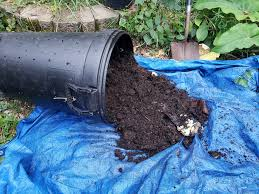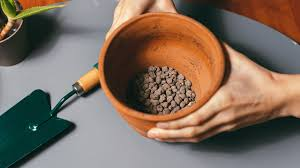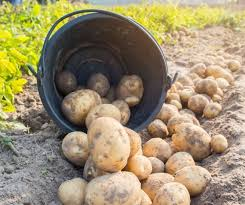Gardening is a rewarding hobby where knowledge is often shared generously among enthusiasts. However, not all advice is accurate, and some popular gardening myths can lead to wasted time, effort, and disappointment. Here, we debunk seven common gardening myths to help you work smarter, not harder.
Myth 1: Compost Bins Must Sit on Soil
It’s a common belief that compost bins need to sit directly on soil for effective decomposition. While placing bins on soil can speed up the process due to access to worms and microorganisms, it’s not a requirement. Compost bins work just as well on hard surfaces like concrete or paving slabs. To introduce beneficial organisms, simply add a layer of garden soil or mature compost from another bin when starting your compost. Worms will eventually find their way in, especially if you add a layer of cardboard or newspaper at the base.

Myth 2: Always Stake Young Trees
Many gardeners stake young trees for support, assuming it’s necessary. However, not all trees require staking. In fact, young trees left to sway in the wind will develop stronger trunks, more robust branches, and better root systems. Stake only trees that need extra support, such as grafted varieties or trees older than two years. Once they are stable, remove stakes to avoid weakening the tree’s natural strength. The exception is small grafted apple trees, which always need support—check with your supplier before planting.
Myth 3: Stones in Pots Improve Drainage
Adding stones, gravel, or broken pots to the bottom of plant containers is a long-standing gardening myth. In reality, this practice can actually reduce drainage. The best way to ensure proper drainage is by using high-quality potting soil and selecting containers with enough drainage holes. If needed, you can add extra holes or place containers on pot feet or pebbles to allow excess water to drain freely. Pot feet also help deter slugs from accessing your plants.

Myth 4: Eggshells Discourage Slugs
Many gardeners use crushed eggshells as a natural slug deterrent, but this method is often ineffective. While eggshells may form a barrier, they need to be laid in thick layers, which isn’t practical unless you have a massive supply of eggs. Instead, focus on eliminating slugs by using traps or barriers. Place planks of wood or stone slabs in shady spots to attract slugs, or bury small pots filled with beer, as slugs are drawn to it. Copper bands or petroleum jelly around pots can also help protect plants from these pests.
Myth 5: Plant Potatoes on Good Friday
While some gardeners believe that planting potatoes on Good Friday guarantees success, this is a myth based on an unreliable date and a variety of environmental factors. Good Friday falls on different dates each year, and local climate conditions and frost dates vary widely. Instead of relying on folklore, use a planting calendar like our Garden Planner, which suggests the best planting dates based on your specific location and weather patterns.

Myth 6: Pea and Bean Roots Feed the Soil
Legumes like peas and beans are often believed to enrich the soil with nitrogen through their roots. While it’s true that legumes fix nitrogen from the air, most of it is stored in the pods, not the roots. Leaving the roots behind won’t provide significant nitrogen to future crops. To maximize the nitrogen benefit, it’s best to compost the entire plant or dig it into the soil before it flowers, ensuring the nitrogen is available to the next crop.
Myth 7: Organic Pesticides Are Harmless
Organic pesticides are often marketed as safe, but this isn’t always the case. Just because a pesticide is organic doesn’t mean it won’t harm beneficial insects. For example, pyrethrum, a natural insecticide, kills not only pests like aphids and caterpillars but also helpful creatures like ladybugs and lacewings. To promote a healthier garden, avoid relying solely on pesticides. Instead, encourage beneficial insects by creating an insect hotel or planting species that attract natural predators.
By busting these common myths, you’ll be better equipped to make informed decisions in your garden. This knowledge can save you time, reduce unnecessary work, and lead to healthier, more sustainable gardening practices.
